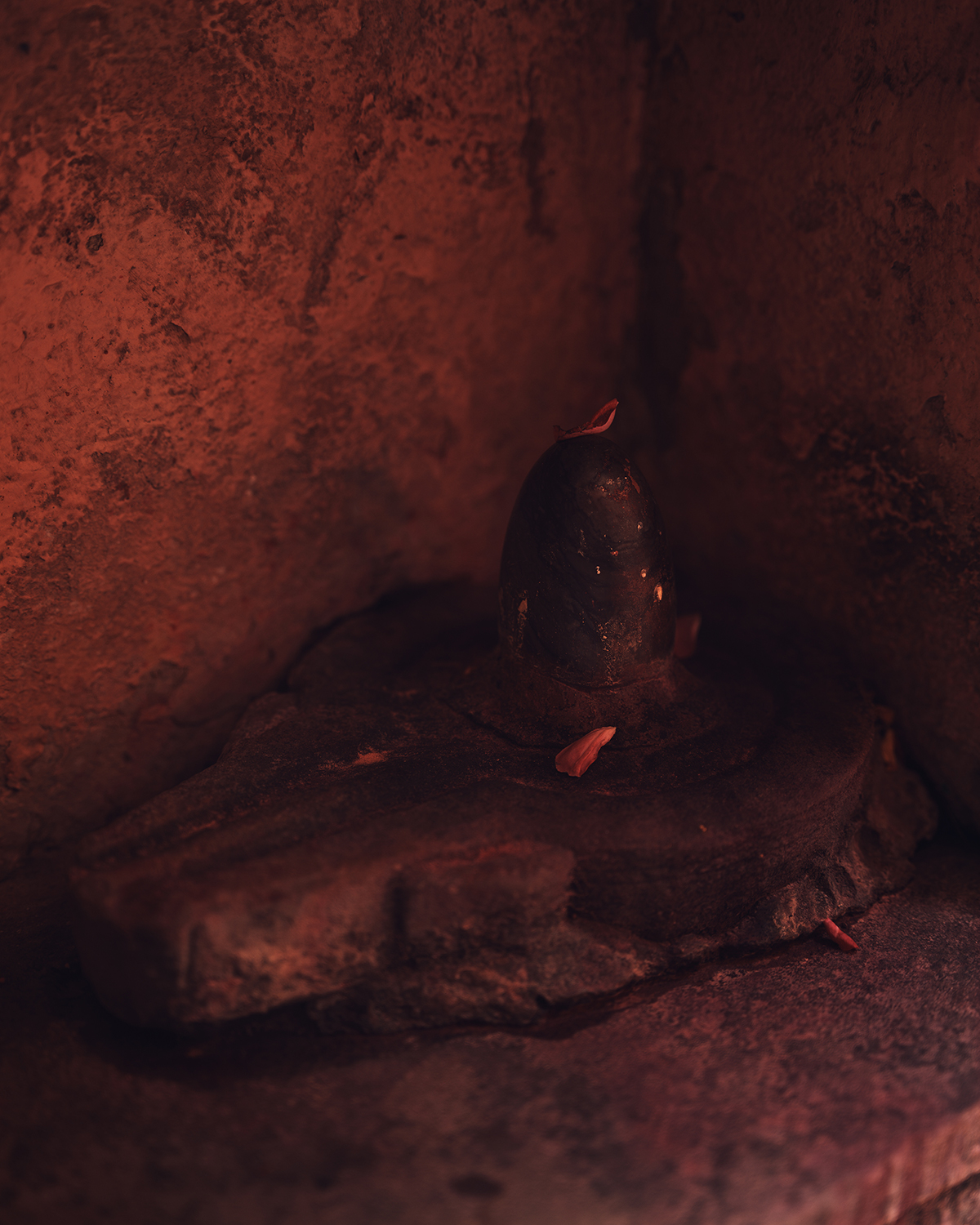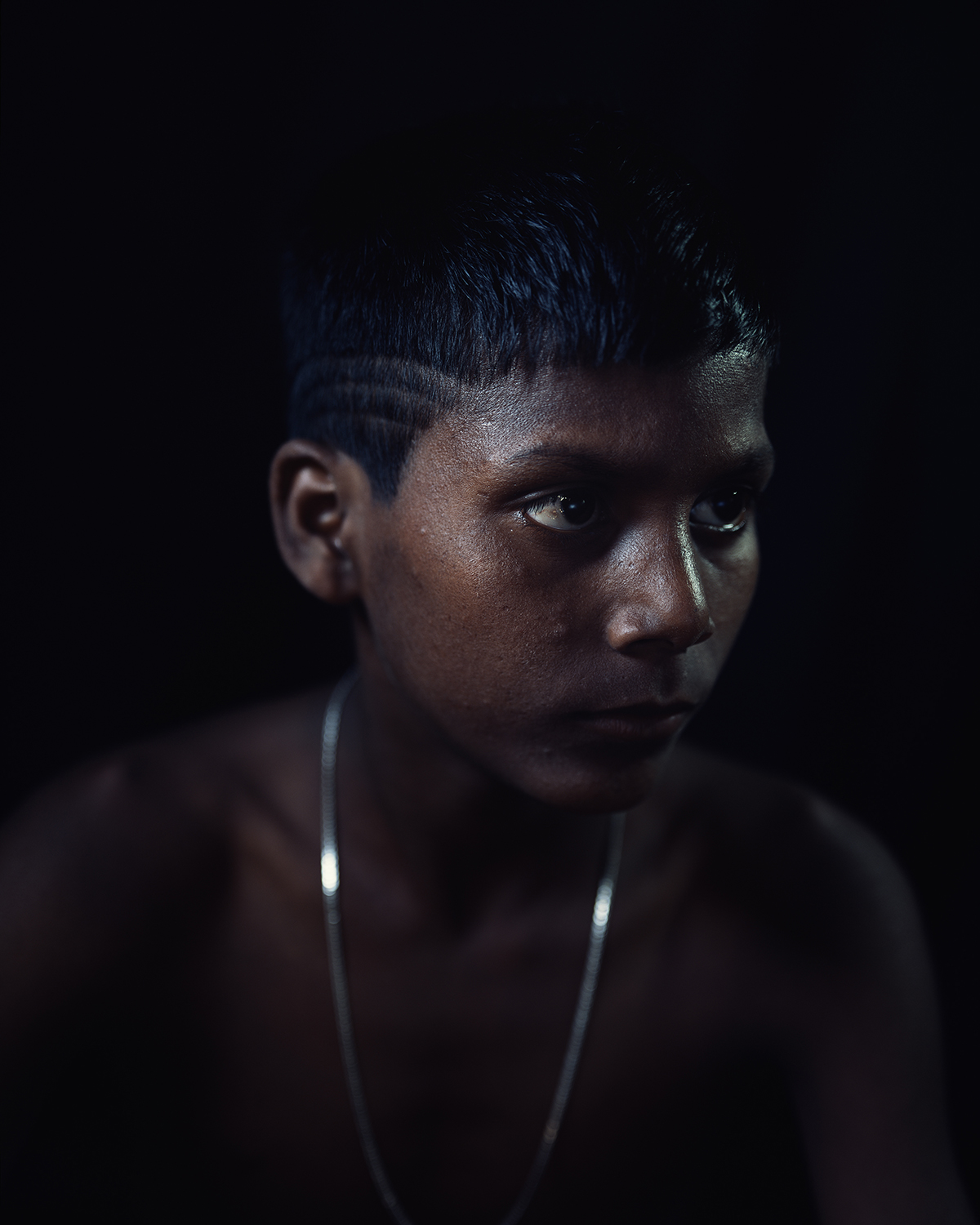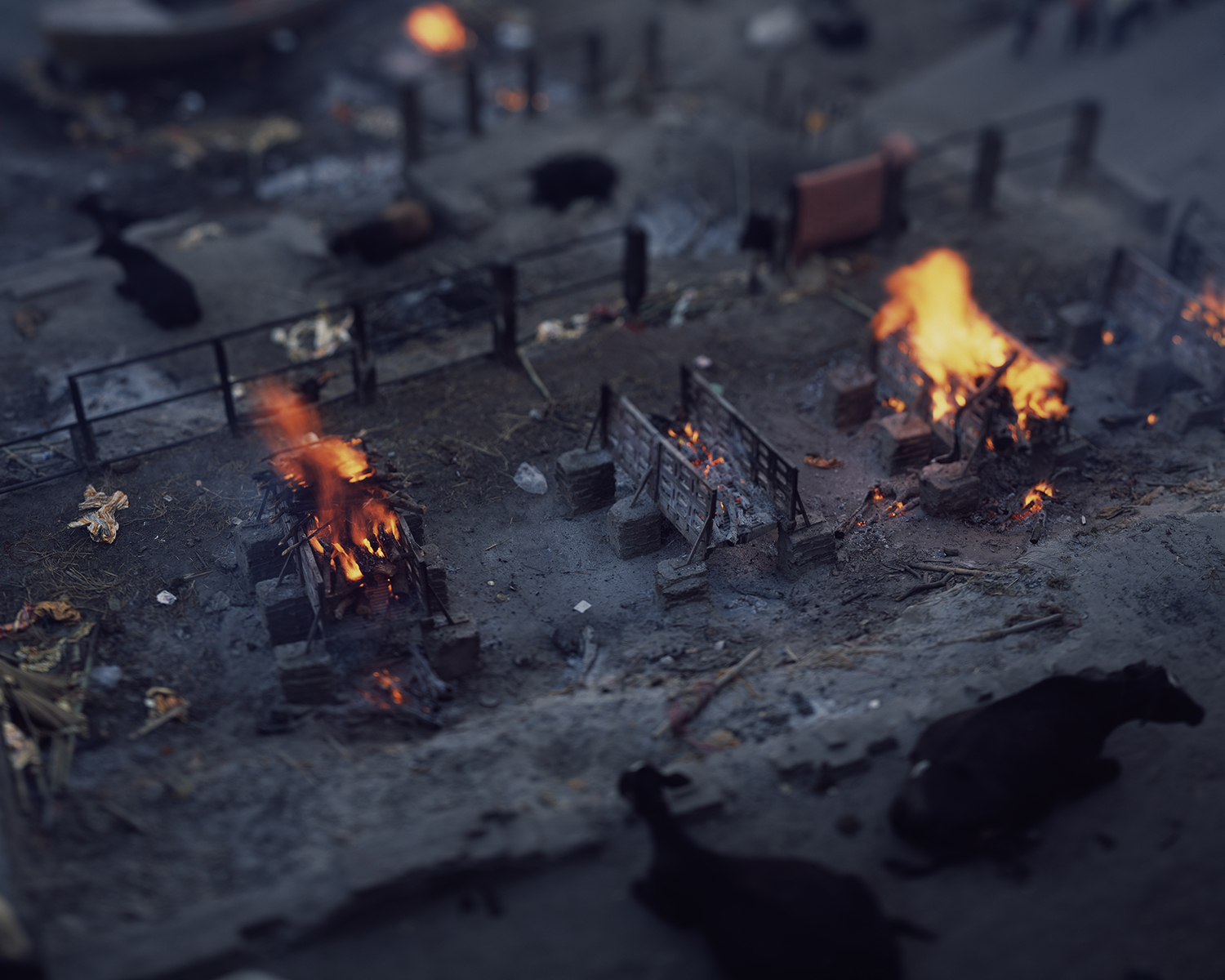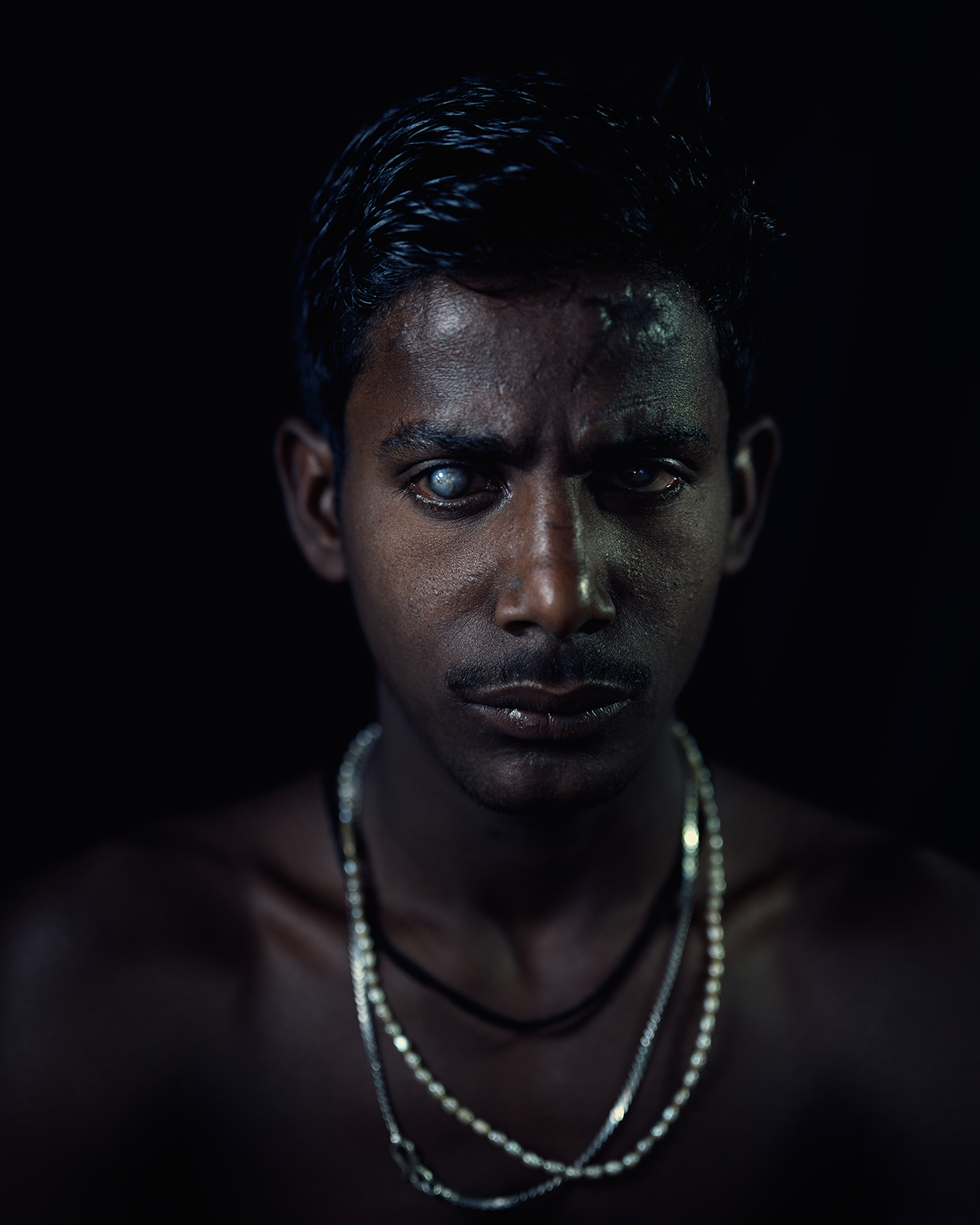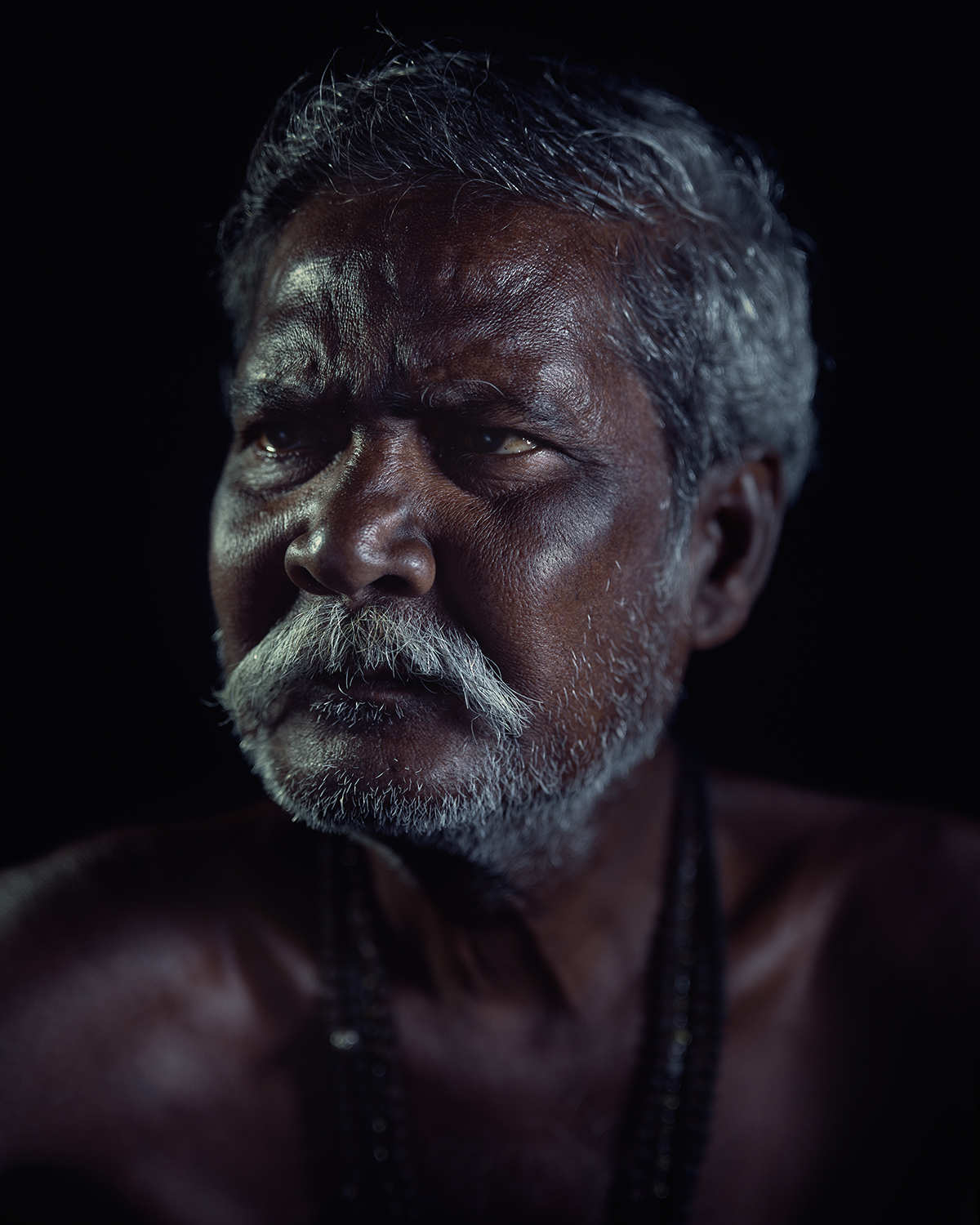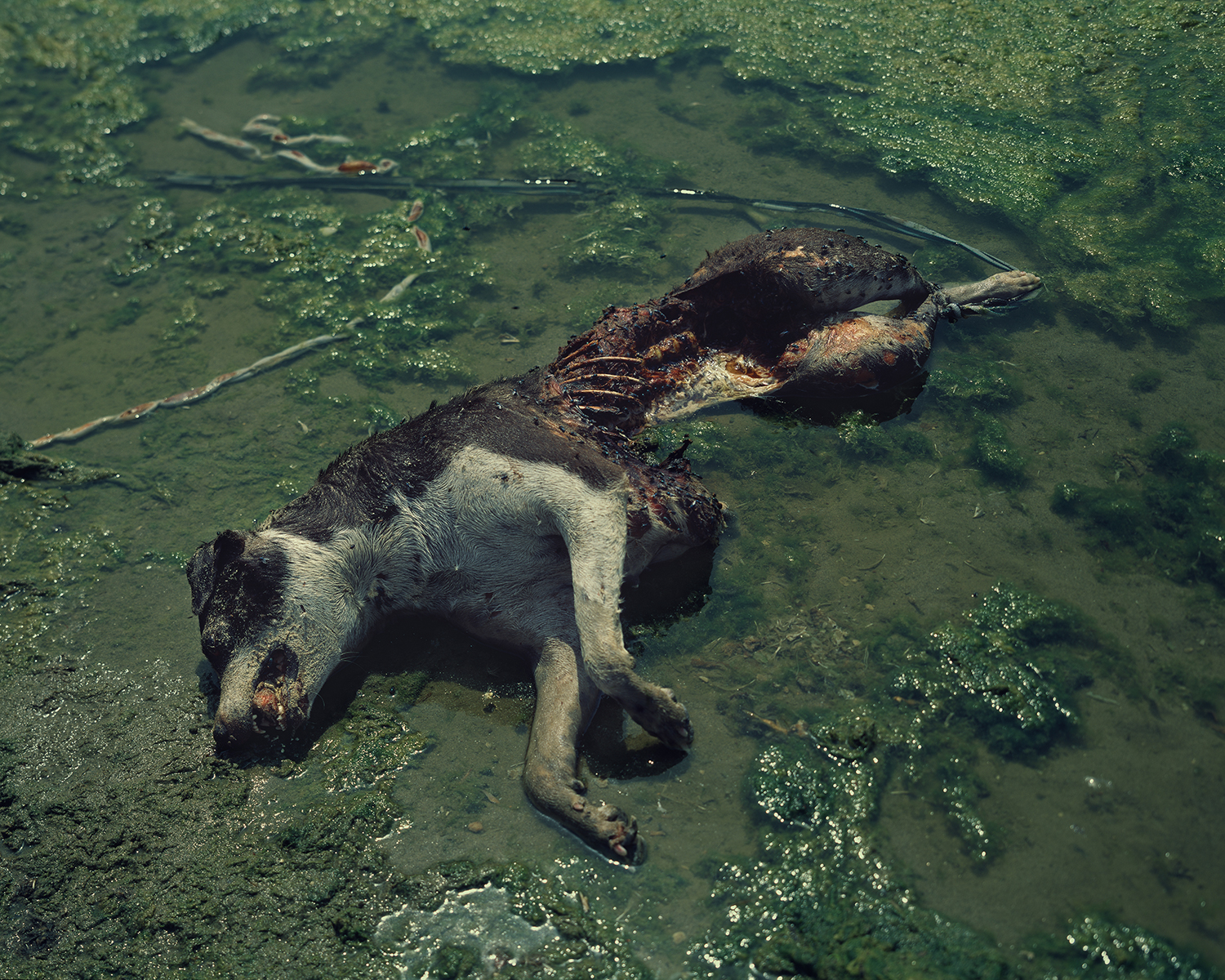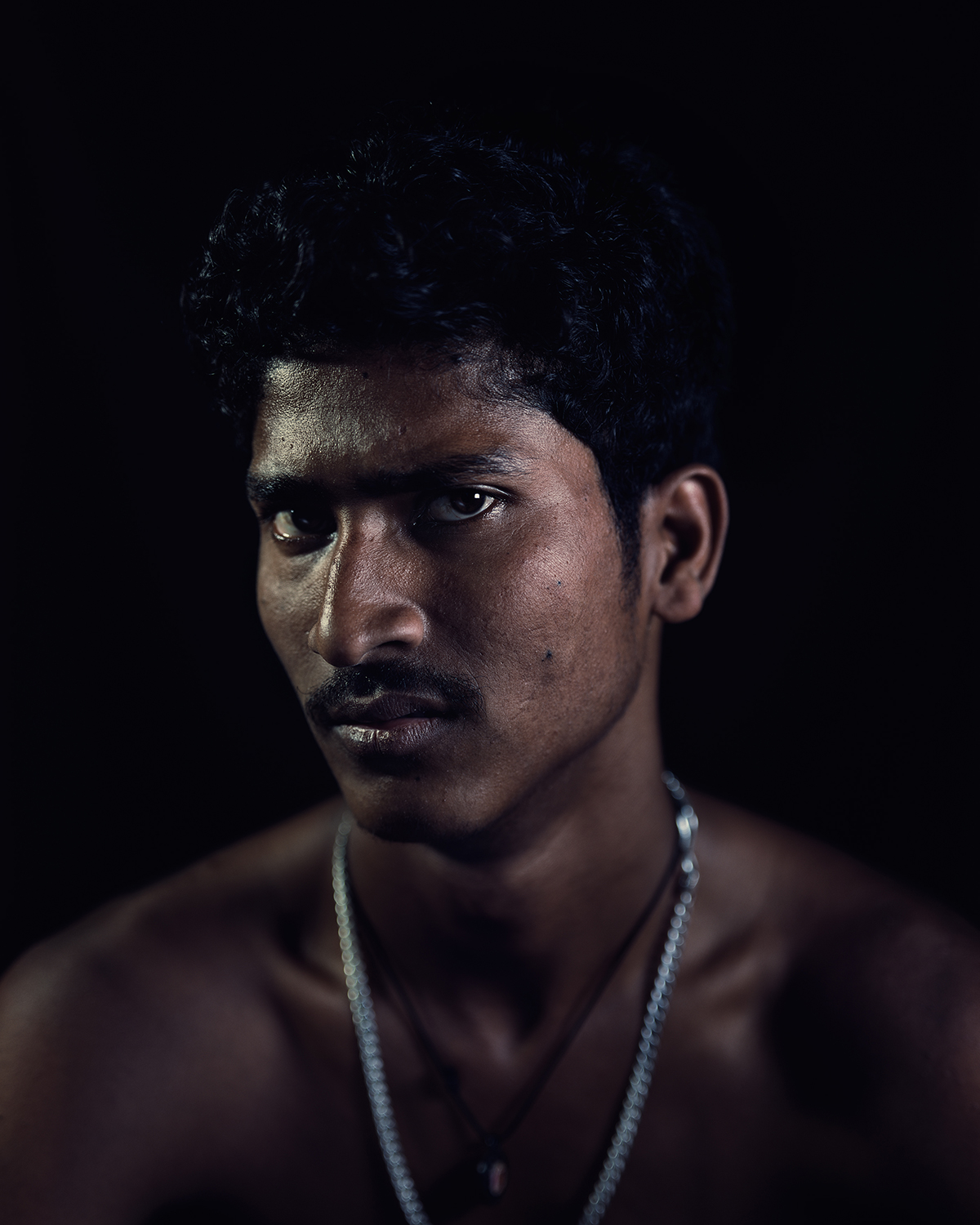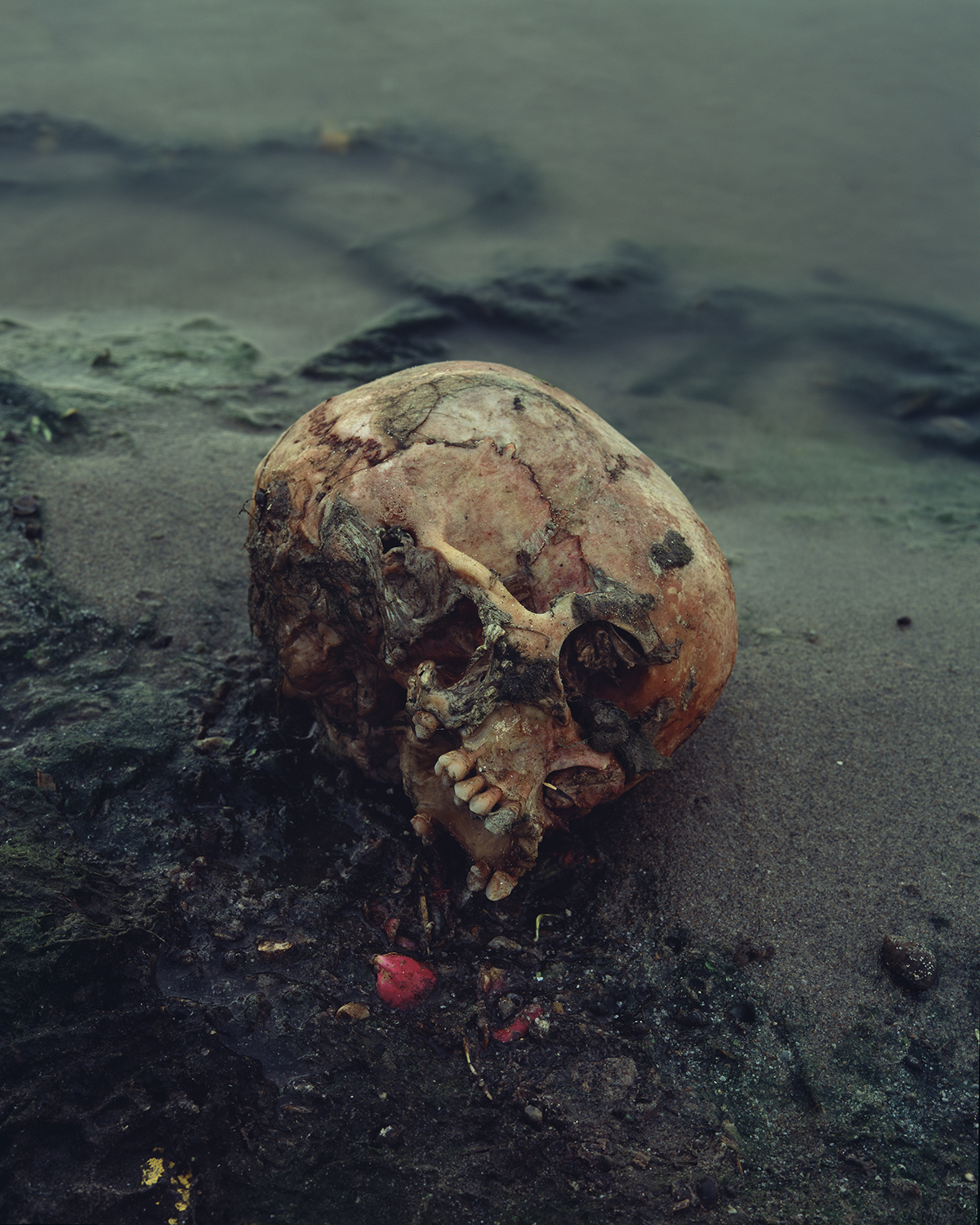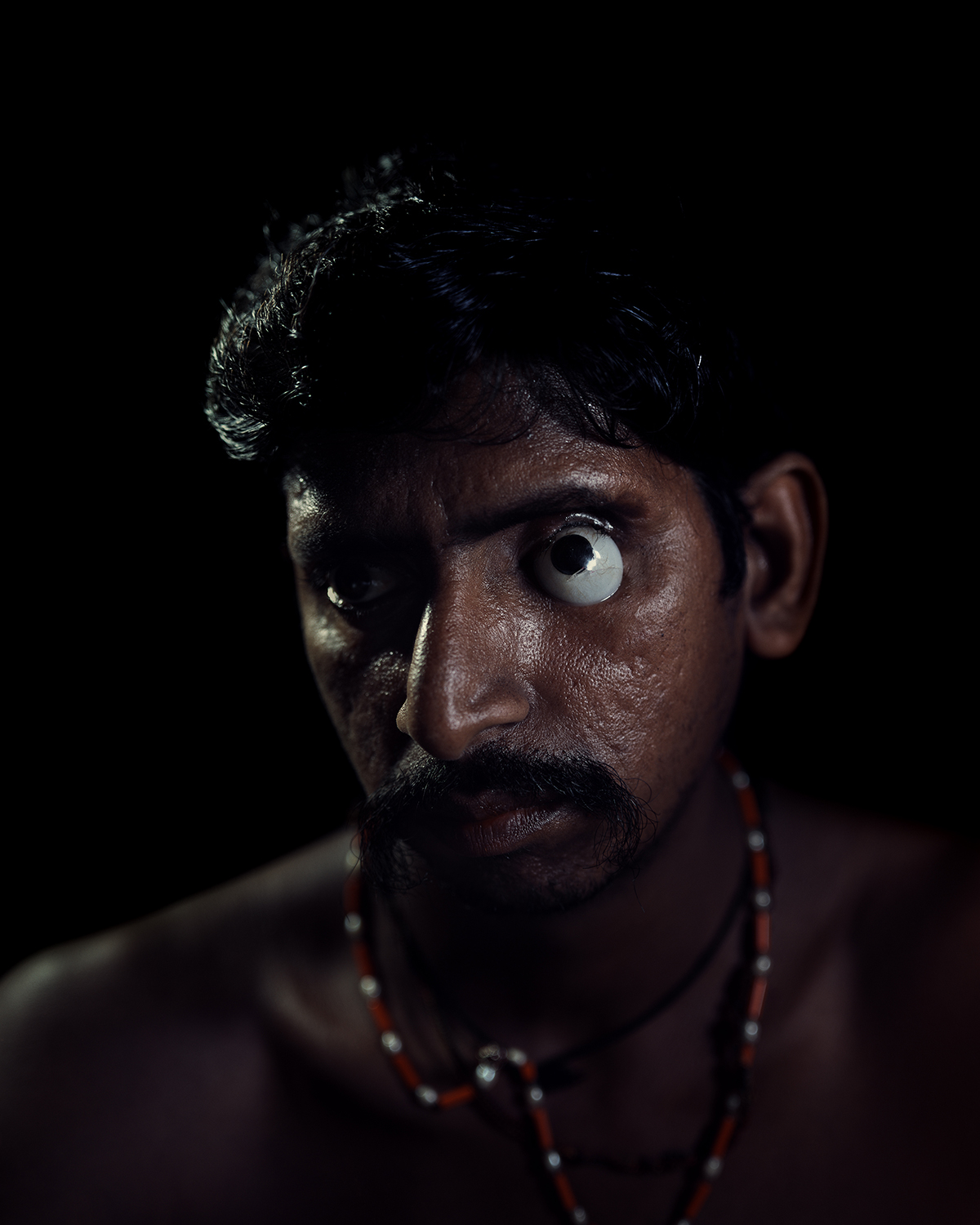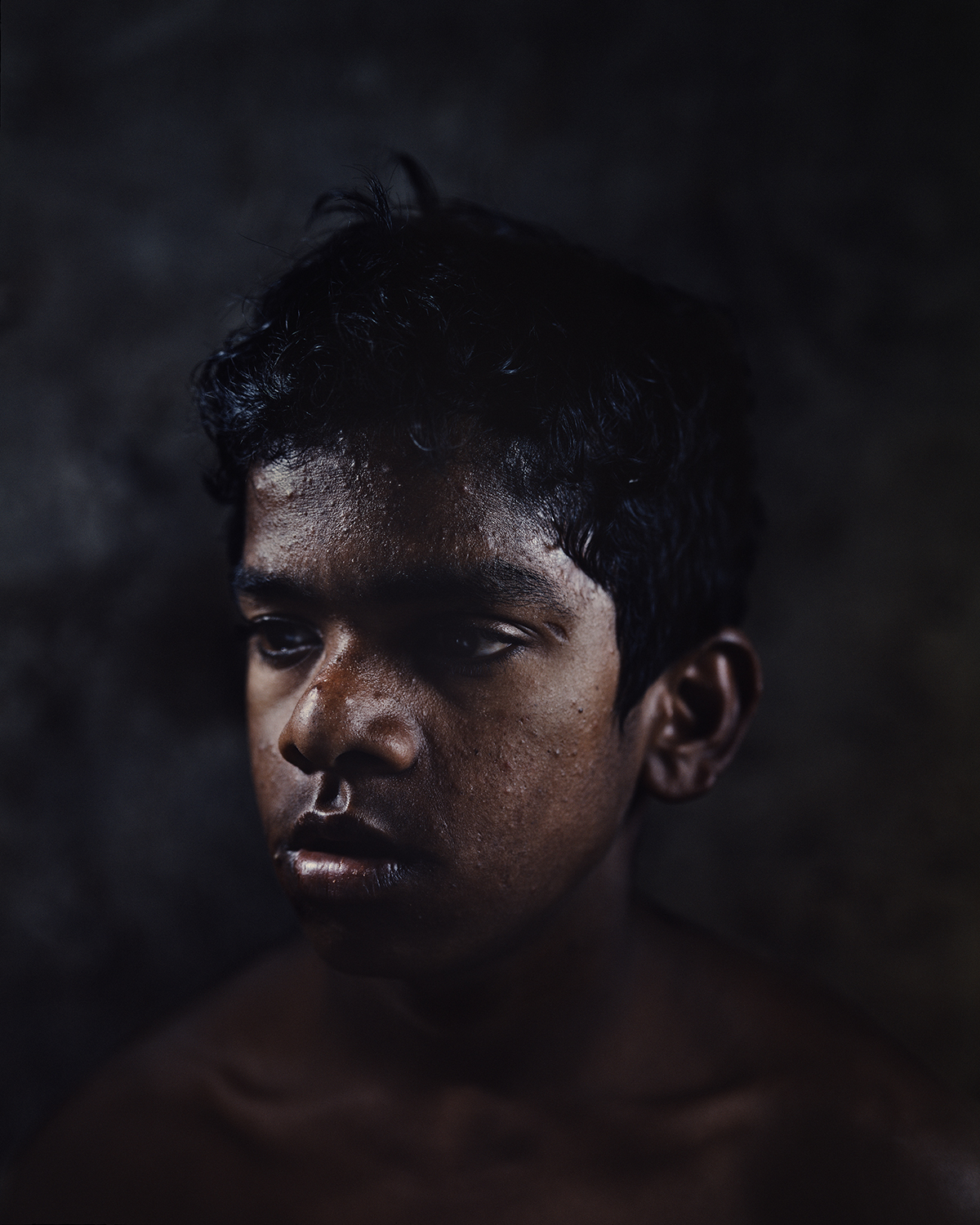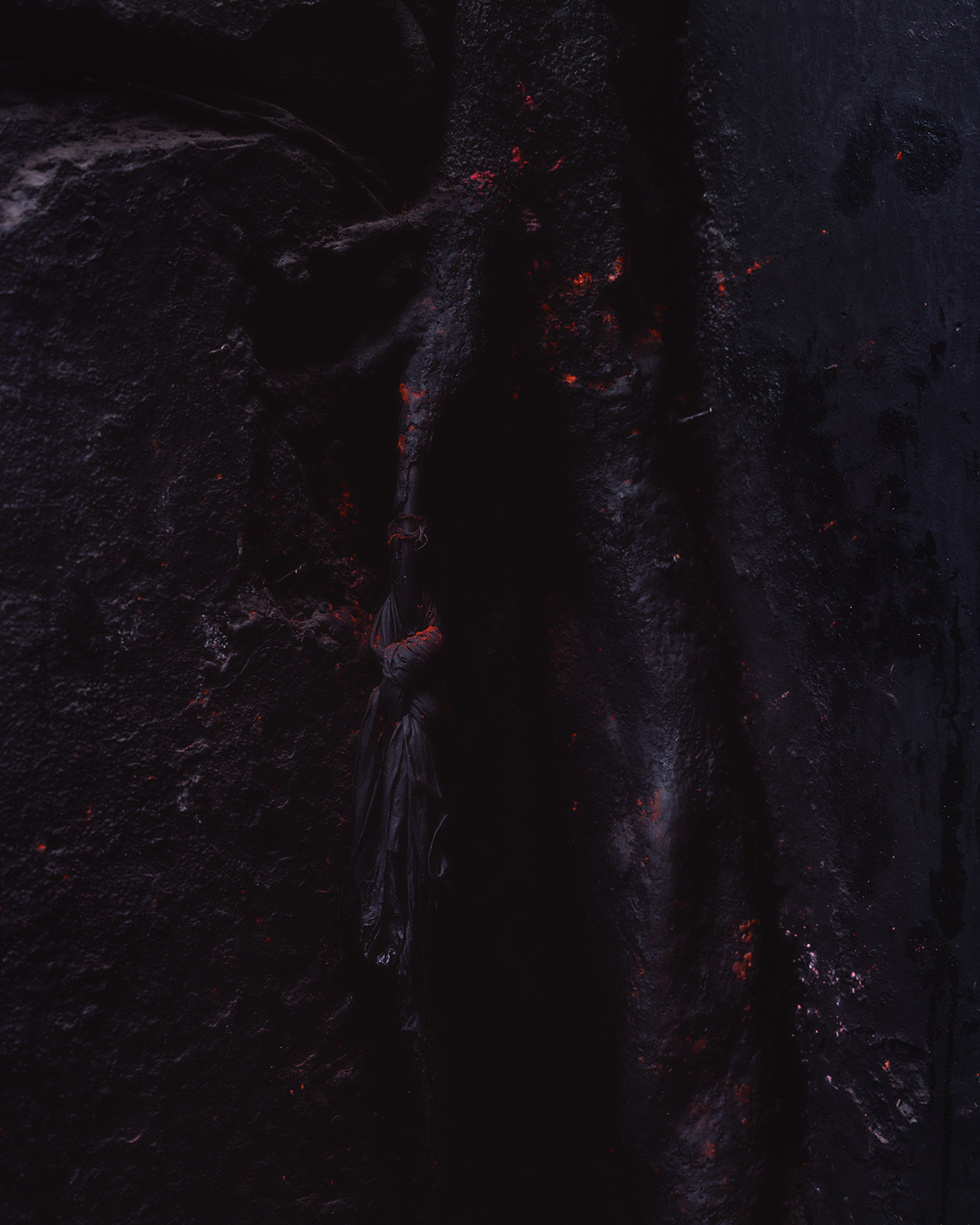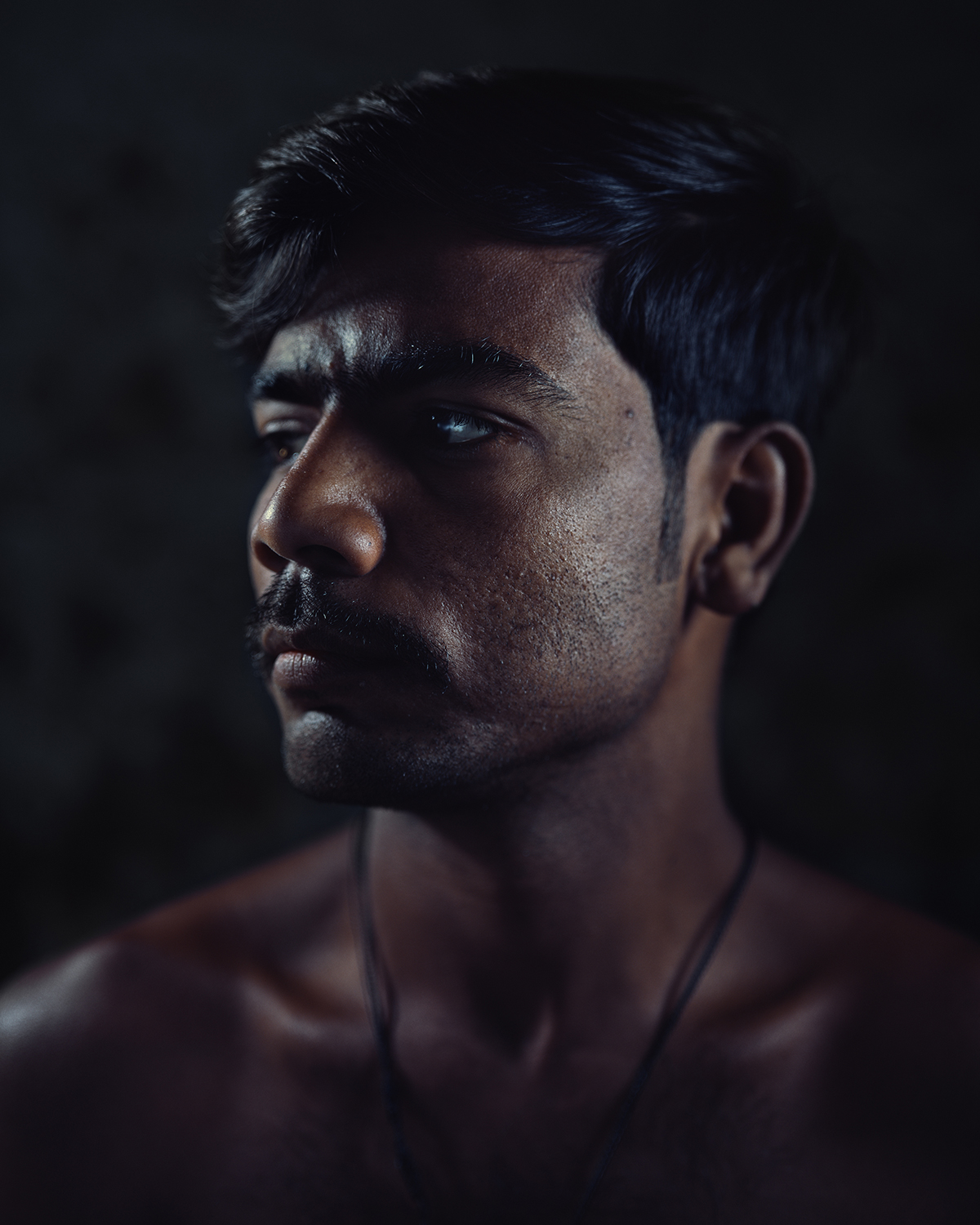The portraits portray men known as Chaudhary in Varanasi – the Untouchables, who hail from the lowest caste in India and have historically been tasked with the cremation of deceased bodies in this sacred city. This arduous responsibility was designated to them as one among the many marginalized roles within Hindu society. Although theoretically, the constitution of the Republic of India since 1950 abolished caste-based dependencies, aligning with the ideals of Mahatma Gandhi, who campaigned against all forms of social discrimination. In Gandhi’s vision, the Untouchables, referred to as „Children of God,” were granted numerous rights (including access to education and public positions) and were formally integrated into the social framework. Nevertheless, to this day in Varanasi, the Untouchables continue to bear the burden of societal stigma. Chaudhary individuals tend the symbolic Eternal Fire at the hearth of Manikarnik Ghat, where hundreds of bodies are cremated ceaselessly day and night.
Sons labor alongside fathers, cousins with uncles, the young and the old alike participate in the cremation process. The cremations conducted here by the Untouchables ensure the continuity of the cycle of reincarnation, known as samsara, and the achievement of nirvana. The waters of the Ganges River, flowing at the base of the Ghat, are inseparably intertwined with these rituals, playing a fundamental role in the life and death of Indian society as a whole and holding significant significance in the lives of the individuals captured in the photographs. Inescapable.
2016 – 2017
